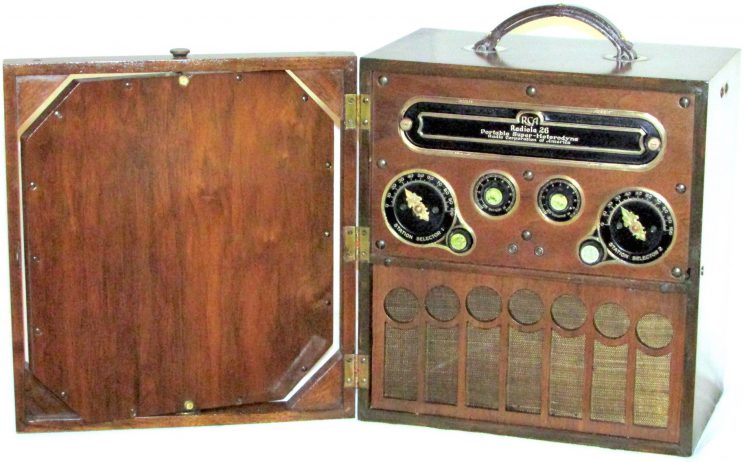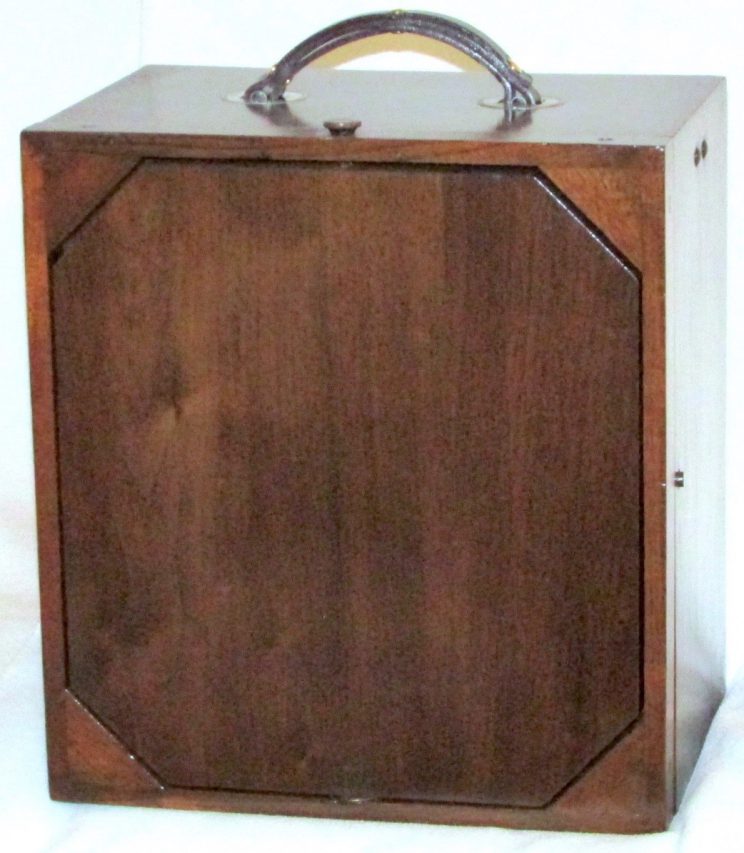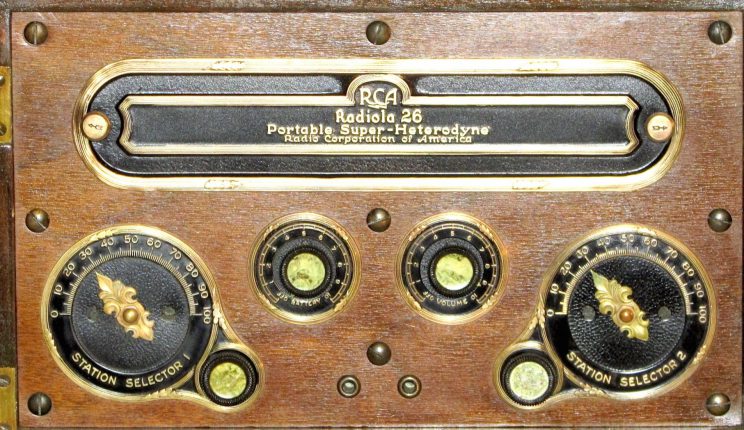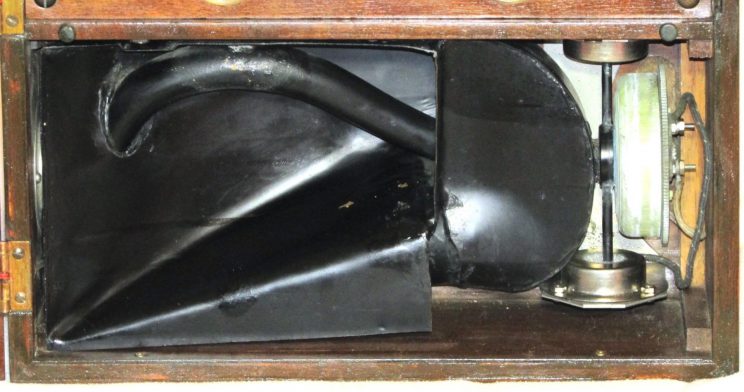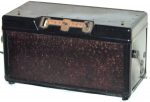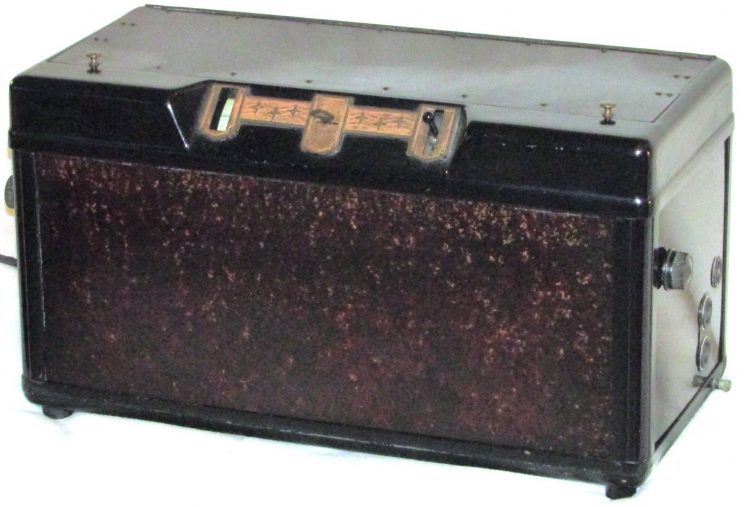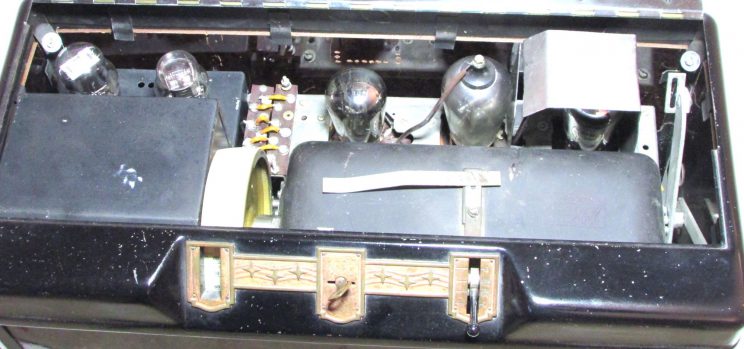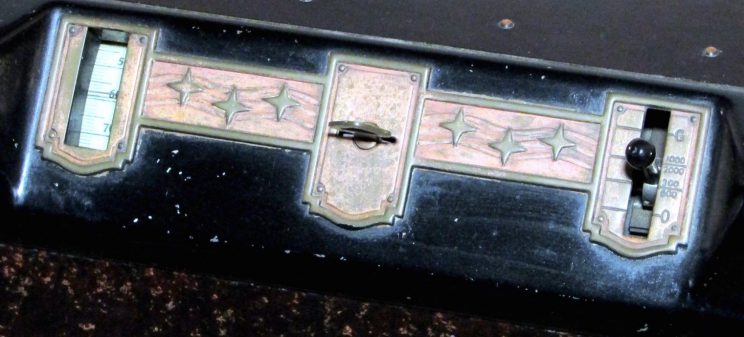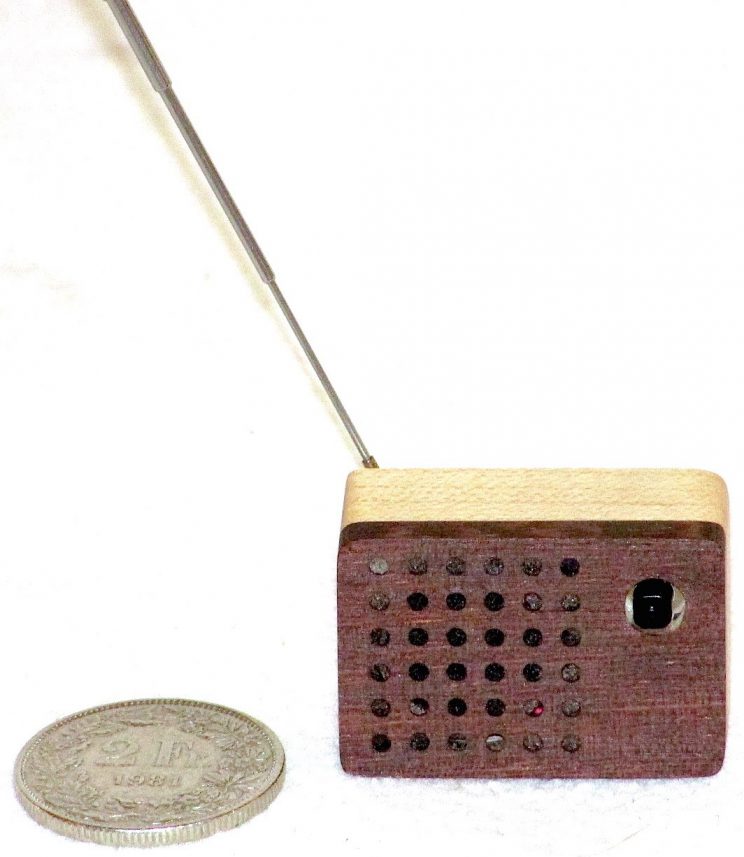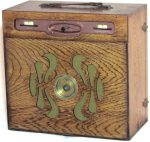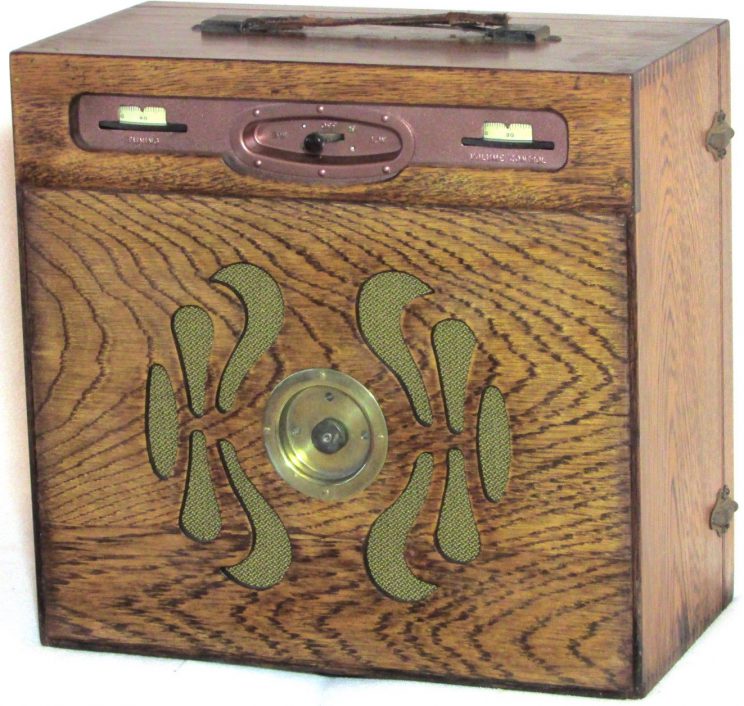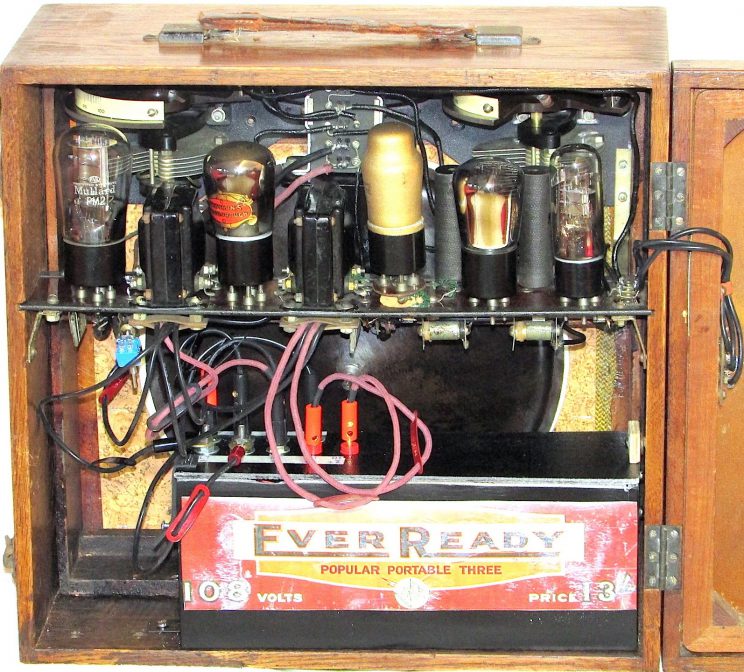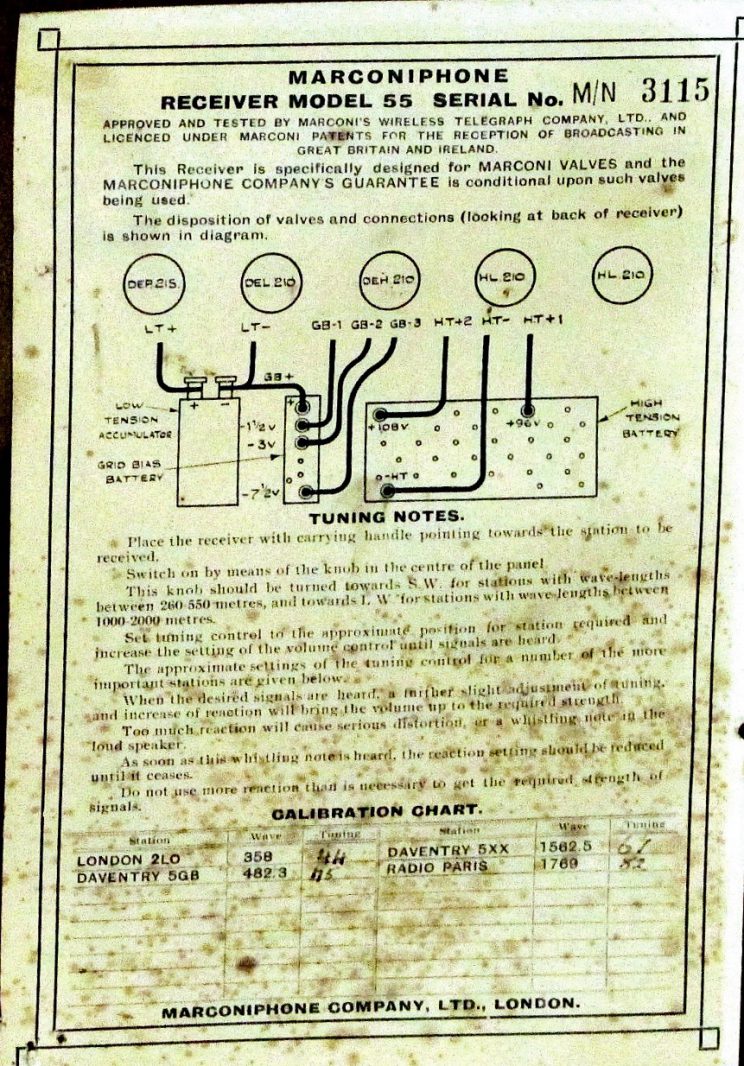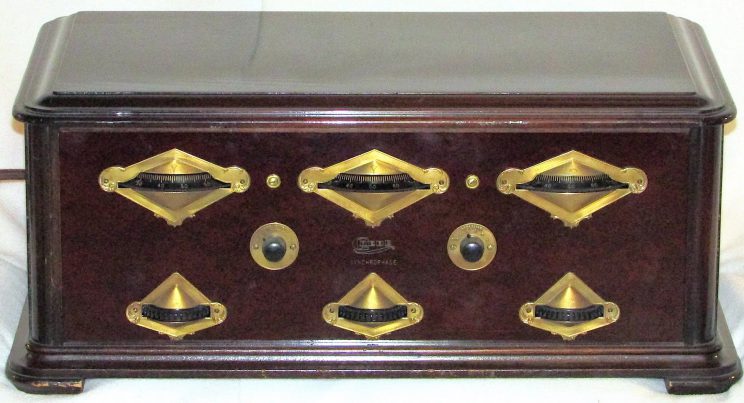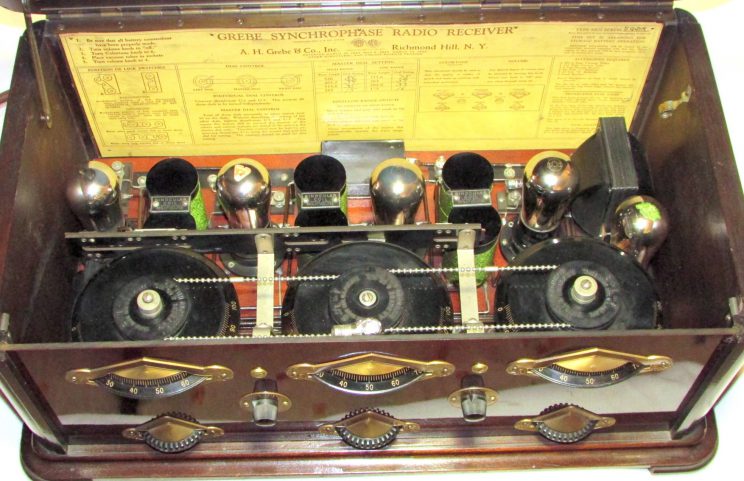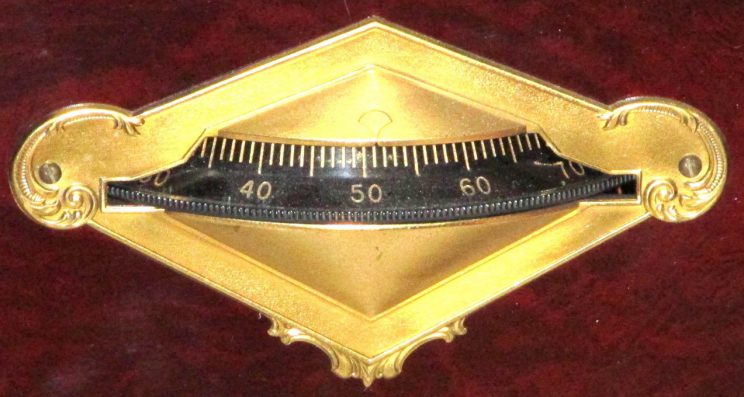Radio portatile supereterodina a 6 valvole (UV199). Molto sensibile e selettiva, antenna a quadro integrata nel portello anteriore. Tutta l’elettronica è contenuta in una scatola metallica che il costruttore chiamava “catacomba”, riempita di resina dura allo scopo di impedirne l’accesso e copiare il circuito. Alimentazione: filamenti 4,5V, anodica 45V e 90V.
Dimensioni: 330 x 360 x 235 mm, peso 11.2 kg
Portable 6 tubes (UV199) superheterodyne Radio. Very sensitive and selective, loop antenna integrated in the front door. All electronics are contained in a metal box called “catacomb” by the manufacturer, filled with hard resin in order to prevent access and then copy the circuit. Power: 4.5V filaments, anodic 45V and 90V.
Dimensions: 330 x 360 x 235 mm, weight 11.2 kg
Il portello ottagonale è l’antenna a quadro
The octagonal door is the loop antenna
Vista del pannello di comando
View of the control panel
Altoparlante a tromba
Horn speaker
Le 6 valvole
6 tubes



